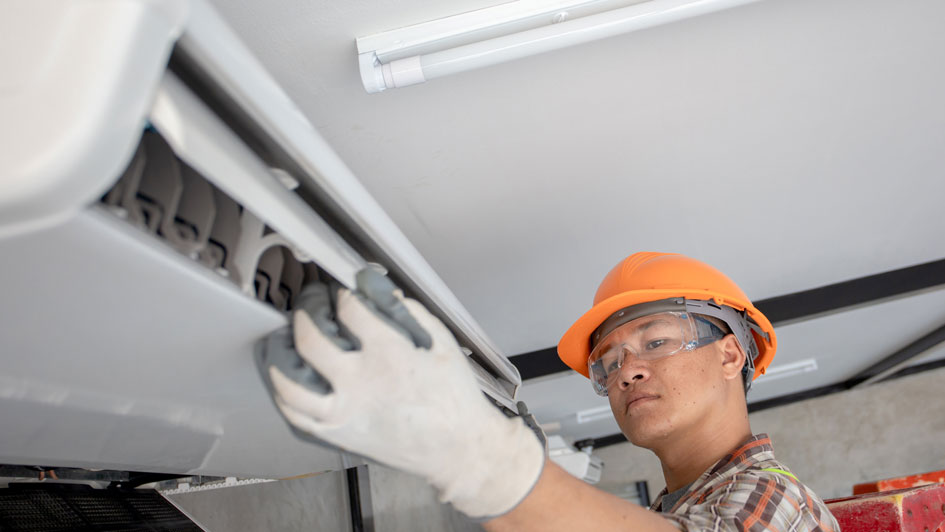
When looking for a heating and cooling system for your residence, it’s crucial to choose one that balances efficiency, functionality and budget. That’s why many homeowners explore the possibility of mini-splits for comfort in their home.
Mini-splits—often known as ductless mini-splits—offer a variety of advantages that make them a popular solution for both homes and businesses. They're very energy efficient, lowering energy consumption and saving on utility costs, because they don't have the energy losses affiliated with the ductwork found in traditional HVAC systems. They also allow users to tailor the temperature in each room, improving overall comfort while saving energy.
If you’re thinking about mini-split installation in Chatsworth, it’s necessary to first research if these devices are the right solution for your living situation. Here, we’ll examine how mini-splits measure up to other heating and cooling systems.
What a Mini-Split Is and How It Works
A mini-split, or ductless mini-split, is a heating and cooling device that doesn't need ductwork to function. It's often used in homes that don't have existing air ducts and for homes with rooms that aren’t served well by the home's existing HVAC system.
A mini-split system is made of two major components: an outdoor compressor/condenser and an indoor air-handling device. The two are attached by a conduit containing the power cable, refrigerant tubing, suction tubing and a condensate drain.
Here's how it works: the exterior compressor circulates the refrigerant necessary for heat exchange throughout the coils and the air handler. The indoor component pulls in air from the room, cools or heats it over the coils and forces the conditioned air back into the room.
Mini-Split vs. Central Air
Mini-splits provide targeted cooling in specific rooms or zones of your home. They are excellent for energy efficiency because they only provide hot or cold air for the areas you desire. However, they might not blend seamlessly into every decor due to the fact they have wall-mounted indoor units.
On the other hand, a central air system uniformly cools your entire home, producing consistent comfort levels throughout. Its ductwork is tucked away in a mechanical room or closet, preserving the appearance of your home. But it might not be as energy efficient as a mini-split, especially in bigger homes or residences where certain spots may not need continuous conditioning.
Mini-Split vs. Window AC/Window Unit
Mini-splits are often more energy efficient and less noisy than a window air conditioning unit and are able to cool multiple rooms. This is why mini-splits are a versatile alternative for lots of homeowners. They also utilize a kind of refrigerant that is more eco-friendly, limiting their environmental impact. These devices can even add value to your home due to their reliable nature and superior cooling capabilities. However, they come with a higher up-front cost.
On the other hand, window air conditioning units are less expensive up front. They might be a good fit for homes that are not able to accommodate a central air system or for people with budget constraints. Even with these advantages, window units can utilize up to 40% more energy than ductless mini-split systems and are often noisier.
Mini-Split vs. Portable AC
The answer to what is better, a ductless mini-split or a portable air conditioning unit, will depend on on your main concerns. If your main considerations are energy efficiency and performance, a mini-split is much more effective than a portable AC unit. However, if budget is a significant concern, a portable AC has a lower initial investment.
Mini-Split vs. Gas Furnace
Deciding between a mini-split system and a gas furnace depends on a range of factors such as the climate in your city, home size, energy efficiency preferences and spending plan.
A mini-split system typically is more energy efficient than a gas furnace. It can heat and cool defined areas in your home, supplying custom climate control in individual rooms. Mini-splits also are normally quieter and have a higher up-front cost, but their operating costs are usually lower due to their greater energy efficiency.
On the other hand, a gas furnace can be a very effective heating source, particularly in colder climates where mini-split heat pumps may struggle to maintain comfort levels in the bitter cold. Even though they are less energy efficient than mini-splits, gas furnaces typically cost less. Having said that, their operating costs can be more costly, especially if natural gas prices jump up.
Mini-Split vs. Heat Pump
Mini-splits and heat pumps operate using the concept of heat transfer. They are both energy efficient, but a heat pump's ductwork can cause more energy usage. That said, the choice between a mini-split and a heat pump often depends on individual needs and circumstances.
Case in point, if you are living in a warmer climate and primarily need cooling, a mini-split system might be a more effective choice. However, if you need both heating and cooling and already have ductwork in your home, a heat pump might be a more efficient option.
Mini-Split vs. Space Heater
When it comes to heating and cooling a home, mini-splits and space heaters each have strengths and weaknesses. However, for total efficiency, versatility, comfort and safety, mini-splits come out on top. Mini-splits supply superior energy efficiency due to the fact they deliver conditioned air straight to different zones and can serve numerous rooms at once.
Space heaters are a great deal less expensive to buy but are typically recommended for heating a confined area or a single room. They also can be less energy efficient. Unlike mini-splits, space heaters do not deliver cooling. The greatest drawback for space heaters is the risk of fire. Authorities say some 1,700 fires per year involve space heaters.
